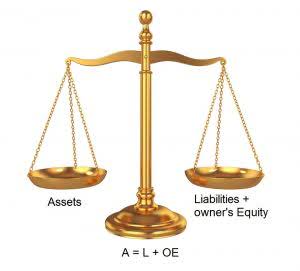
However, within each category are subcategories specific to gyms that provide more detailed information about different revenue streams or expense types. For example, under revenue accounts in a gym’s chart of accounts, you may find subcategories like “membership fees,” “personal training,” “group classes,” “merchandise sales,” etc. This level of specificity allows gyms to track each source of revenue separately and evaluate their performance individually. This involves tracking income and expenses, managing invoices and receipts, and regularly reconciling your books. You’ll also need to track assets like gym equipment and liabilities like loans or accounts payable.
Shape up your club and get fiscally fit with professional bookkeeping and controller support.
CPMA measures how much it costs to acquire a new member and allows gym owners to evaluate the return on investment from their marketing campaigns. For gyms that sell supplements or merchandise on-site, effective inventory management becomes crucial. Maintaining optimal stock levels helps avoid shortages or excessive holding costs while ensuring products are readily available to meet customer demands. By scrutinizing expenses in this manner, gym owners can identify areas where savings can be achieved without compromising the quality of services provided.
Tools and Resources for Financial Learning
More important, these statementswill help you anticipate and confidently answer lenders’ questions in the eventthat you want to grow your business in the future. They must meticulously maintain journals and ledgers while ensuring that all entries are properly categorized. When you own a business, you want to make sure you have everything documented with a trail, in the event of an IRS audit. For that reason, we tell our clients to avoid cash transactions as much as possible. Cash is hard to track and can lead to a lot of questions if you were to get audited by the IRS. In the rare event that cash is your only payment option, be sure to get a receipt so you can properly document the business expense.
- Common benefits offered include health insurance plans and retirement savings options like 401(k) plans or individual retirement accounts (IRAs).
- Additionally, other KPIs like customer churn rate, revenue growth rate, and profit margin are essential for assessing overall financial performance and identifying areas of improvement.
- Set a schedule of managing your General Ledger either daily, weekly or monthly to get maximum value out of your accounting process.
- Inventory is the stock of goods a business has on hand or in transit, waiting to be sold.
- After deciding on criteria for evaluating the software and then researching the app itself, we tested the app, noting its strengths and weaknesses.
Basic Accounting Principles for Gyms
- Every gym operates in its own unique way, dealing with membership subscriptions, hourly services costs, equipment depreciation, and specific industry tax obligations.
- Preparation of a budget leads todecisions that will affect the future course of your business.
- When it comes to gym memberships, drop-in fees, and merchandise purchases, it can be hard to keep track of all your income sources.
- Understanding the specific chart of accounts tailored to gyms is important in order to capture relevant data accurately.
This also means it is more conducive to errors, particularly if you lack accounting experience. Following a standard month-end close regimen with a coordinating schedule ensures everyone understands when the data is accurate and ready for use. If you’ve never used accrual-based accounting, you should talk to a professional bookkeeping services provider or a CPA to ensure your plan is solid and will help your club get stronger. Exercise.com’s software can assist with some of these tasks by providing streamlined billing, financial reporting, and payroll functionality. In the context of gyms, accounting plays a pivotal role in ensuring accurate financial management, enabling owners and managers to make informed decisions to propel their businesses forward. The importance of accounting lies in its ability to provide a clear picture of a gym’s financial health by tracking revenue, expenses, assets, liabilities, and equity.
This way, you can always get your money on time, unless the member’s card gets declined. We sync seamlessly with your financial accounts and tools to keep your books up-to-date and save you the time and effort of manually uploading documents. Our platform enables you to automate data inputs from most leading providers, helping you bypass frequent errors. We collaborate with vendors such as Gusto, Stripe, Shopify, and Square—ensuring your gym’s finances are consistently precise.

Moreover, evaluating ROI for major asset purchases ensures wise investment decisions that align with long-term business goals. Implementing an automated inventory management system can streamline operations by enabling real-time tracking of stock levels, generating alerts for low-stock items, and facilitating efficient reordering processes. This technology can incorporate barcode scanning capabilities to accurately record sales transactions and update inventory counts instantaneously.
Firm of the Future
They maintain accurate records of daily financial activities and manage accounts payable and accounts receivable. If you carry inventory or have accounts payable https://www.bookstime.com/ and accounts receivable, you’ll likely use accrual accounting. The cash-basis accounting strategy records monies at the time it is spent or gotten.
A credit entrydenotes an increase of a liability, owner’s equity (capital) or revenue, or adecrease of an asset or an expense. Accounts receivable in a gym represents the money owed to the gym by its members for services or products that have been rendered but not yet paid for. Here are five tips as you start this bookkeeping journey as a fitness studio owner. A monthly check-in, complemented by quarterly and annual reviews, helps keep your business financially fit and ready to react to both opportunities and challenges. Gym owners should focus on three key financial documents to gauge the health of their business. If business finances are just not your forte, the best thing you can do for your business is to hire a professional.

However, having some basic knowledge of accounting principles and using user-friendly software can make the process smoother. Their firsthand experiences can provide insights into candidates who have proven themselves in similar environments. Additionally, consider consulting accountants specializing in the fitness industry, as they may be able to offer suggestions based Gym Bookkeeping on their extensive knowledge of financial operations within the gym landscape. It is easy to get caught up in the exciting aspects of fitness, and forget about the boring job of keeping up with the finances. However, it is critical for any new fitness studio owner to understand the importance of bookkeeping, especially in the beginning, if you want to be successful.


